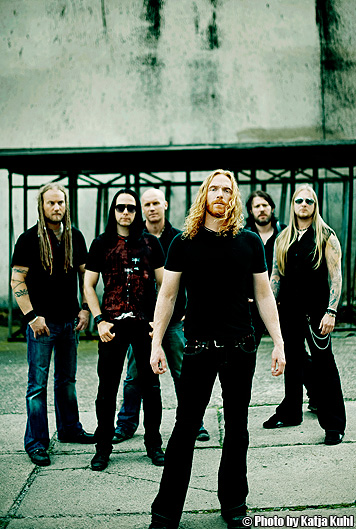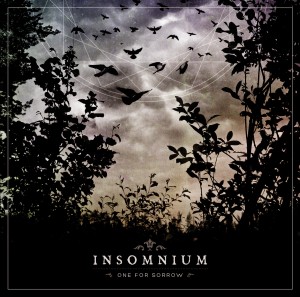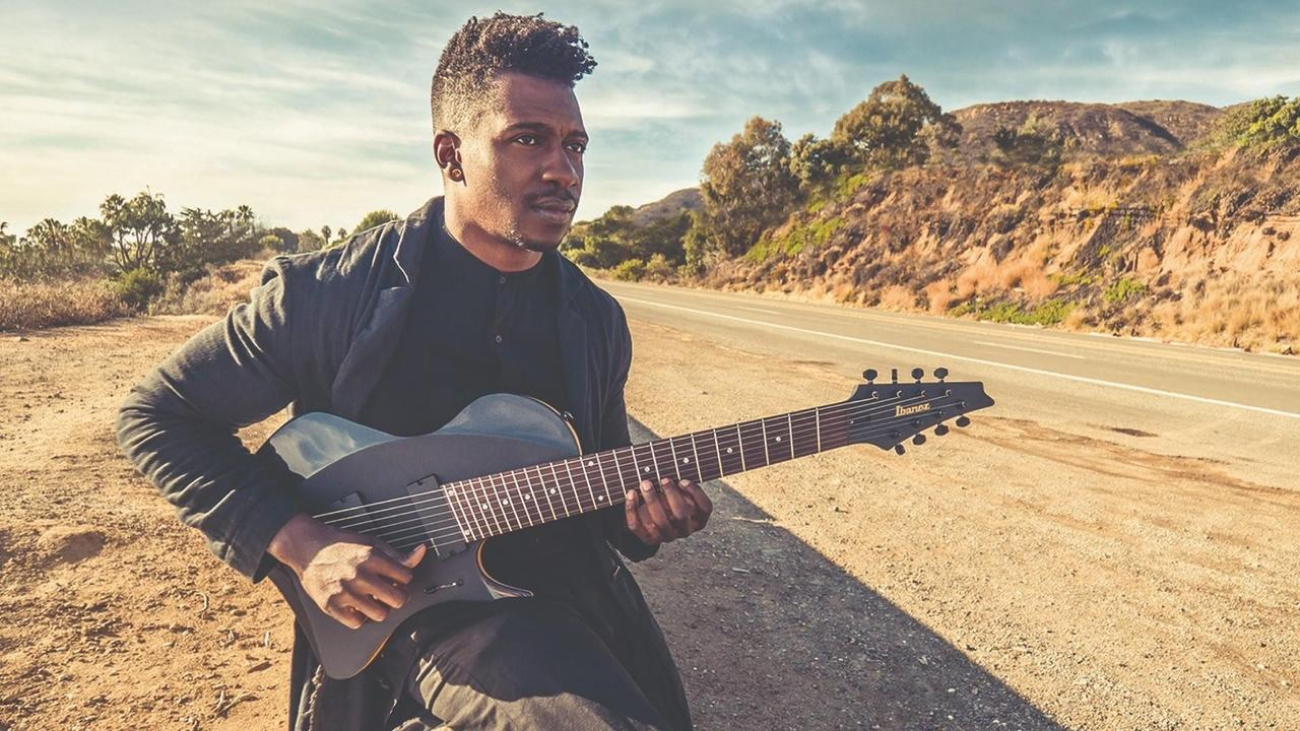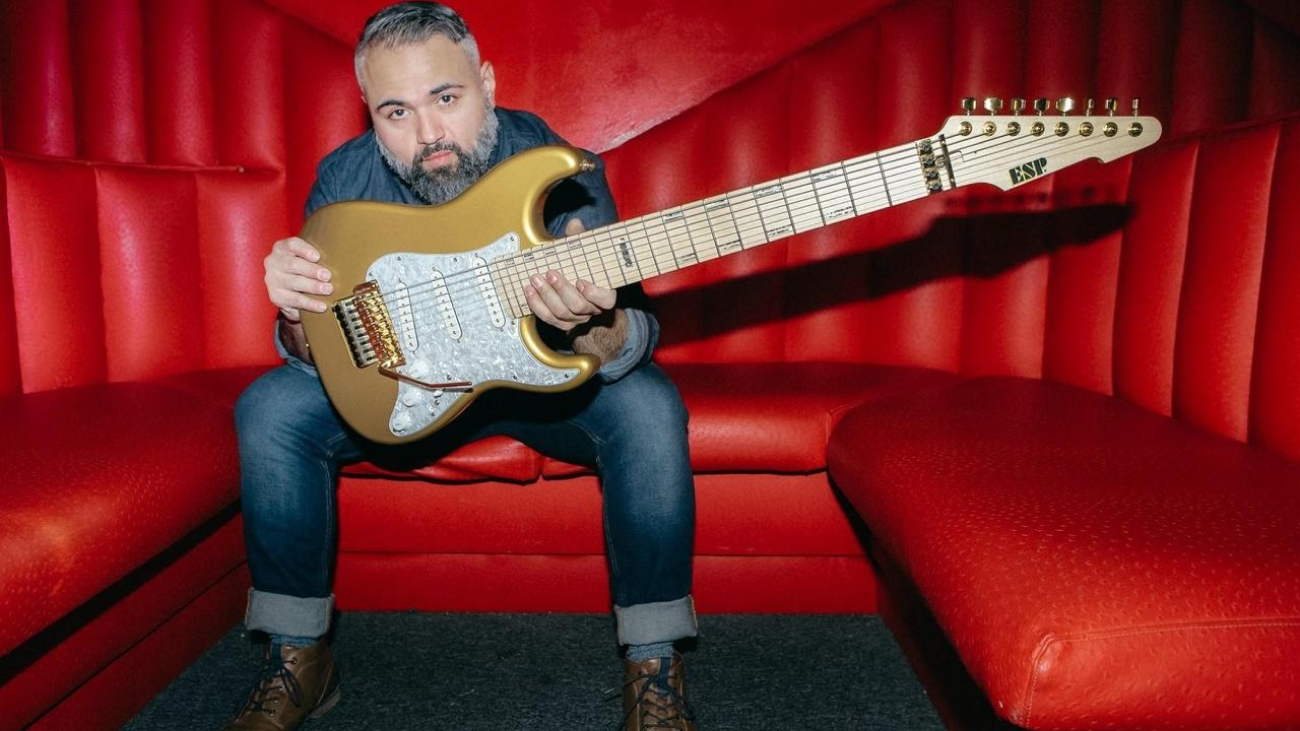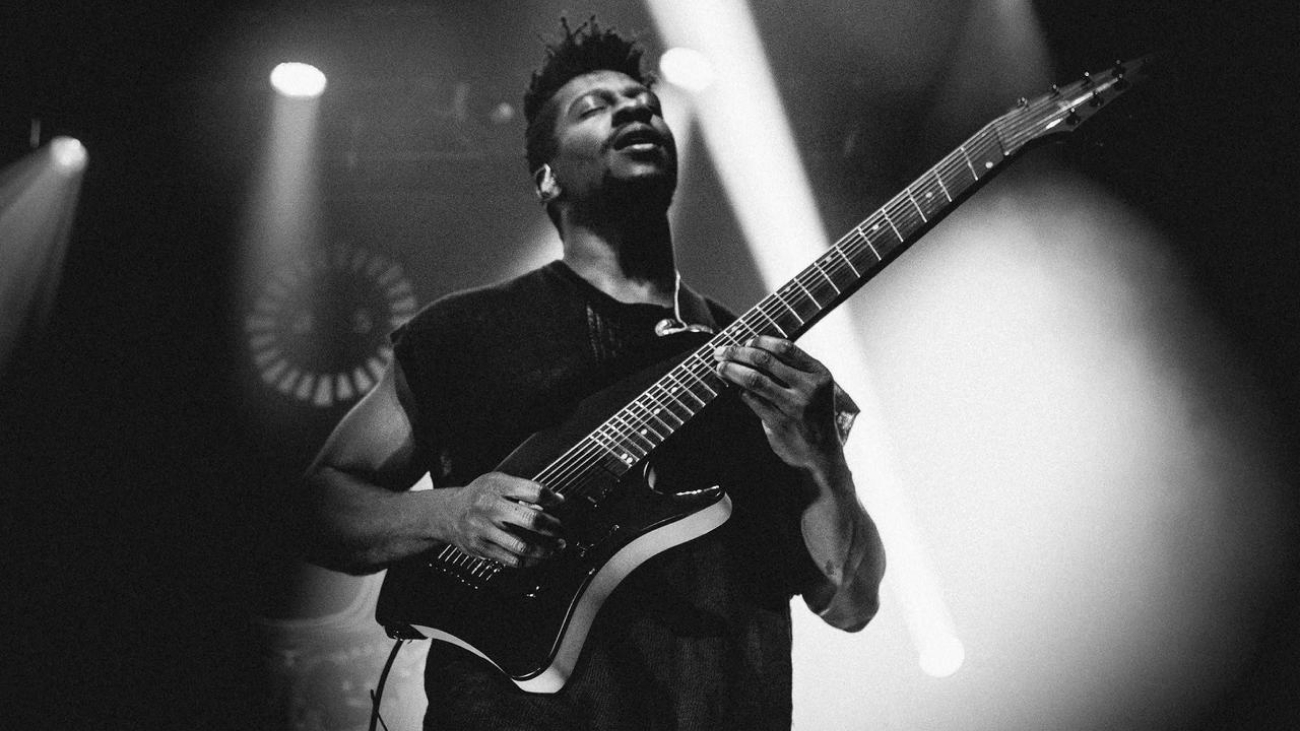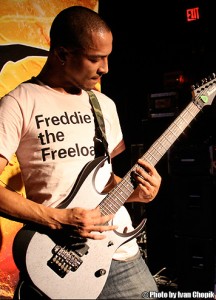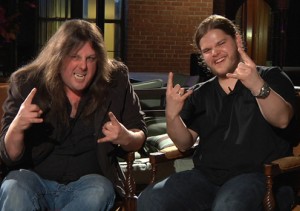 Few bands are as committed to crafting quality melodic death metal as Gothenburg, Sweden’s Dark Tranquillity. Since their formation in 1989, the band’s music has matured along with its members. From the raw enthusiasm of their humble beginnings, through their genre-defining work as a part of the legendary mid-90’s Gothenburg metal scene, to their electronic experimentations in the new millennium, their distinctive fusion of beauty and brutality has been ever-present.
Few bands are as committed to crafting quality melodic death metal as Gothenburg, Sweden’s Dark Tranquillity. Since their formation in 1989, the band’s music has matured along with its members. From the raw enthusiasm of their humble beginnings, through their genre-defining work as a part of the legendary mid-90’s Gothenburg metal scene, to their electronic experimentations in the new millennium, their distinctive fusion of beauty and brutality has been ever-present.
The dynamic guitar playing of Martin Henriksson and Niklas Sundin is integral to Dark Tranquillity’s unique sound. The duo’s memorable riffs and melodies serve as the perfect complement to the tortured growls and introspective lyrics of vocalist Mikael Stanne, and create a strong foundation for keyboardist Martin Brändström’s tasteful electronic textures.
I had the opportunity to sit down with Martin and Niklas at the House of Blues in Boston, MA on the first night of their U.S. tour with Killswitch Engage and The Devil Wears Prada:
CD: The new album, We Are The Void – I hear a lot of things from throughout your career in it, but I also hear some other things, particularly on the opening track ‘Shadow In Our Blood’ – it sounds like some new riff styles that you haven’t explored before. Where did that come from?
NS: It’s hard to tell. We’re basically six songwriters in the band, and everyone has his own pile of influences. On this album, the balance between songwriters is a bit different. I wrote the music for that song myself, and I can’t really pinpoint any exact influence or anything particular that inspired me to do that, but I think the tonality is a bit different – and maybe the kind of industrial vibe in the beginning, which happened more or less by accident.
I think that’s significant for the whole album – that some of the playing and riffing styles are slightly different, but it’s hard to know exactly where it comes from, or whatever reason they’re there for. But yeah, it’s a bit more diverse, I think.
MH: I think we were a bit more allowing, and people’s influences show up more than in the past. So that’s why this album is more diverse than the last couple of albums.
CD: It does seem that way. I feel like Character and Fiction felt somewhat like partners – Fiction seemed like an evolution of Character to an extent, whereas this one feels like new territory.
NS: Yeah, I definitely have to agree on that. I guess there are pros and cons about being in a band that has a history of 20 years – that we do have our trademark sound that would be there even if we would try to escape from it, to sound distinct. I think with Character and Fiction, they do sound pretty similar, without any intention on our side of them being that. So for that reason, the more open songwriting feeling allowed We Are The Void to be a bit different.
CD: Another thing I noticed on it too, is that it seems like a bit of a return to the dual guitar harmonies of some of the earlier work.
| [flashvideo file=”https://guitarmessenger.com/wp-content/uploads/2010/02/Dark-Tranquillity-Interview.flv” width=450 height=273 image=”https://guitarmessenger.com/wp-content/uploads/2010/02/dt_video3.jpg” /] |
NS [To Martin]: Did you think about that?
MH [To Niklas]: Not at all.
NS: Maybe you’re right, but it’s always hard to analyze your own music, and to think too much about that.
MH: I think it’s always been there. I don’t really think of it like: ‘Hey, we had two less riffs on the last album, we’ll do two more on the new one.’ It’s just there when it’s needed and it fits the songs. It definitely wasn’t an approach or something – it just happens.
CD [To Niklas]: On the last album, I saw that you had written a song complete with music and lyrics, ‘Inside The Particle Storm,’ and you hadn’t written lyrics for some time. Did you write any lyrics on the new album?
NS: Actually, I wrote most of the lyrics for the song ‘Arkhangelsk’ and some for ‘Iridium.’ It was kind of out of convenience. I had stopped writing lyrics actively 12 or 13 years ago, so these days I don’t really have any personal need for that outlet – but since I wrote the music for ‘Inside The Particle Storm’ and also ‘Arkhangelsk’ and most of ‘Iridium,’ I kind of had draft lyrics when presenting them to the band. I think Mikael liked the vibe of those lyrics so much that we kept them, more or less. So yeah, I do have a lyrical contribution to the new album, but not because I needed it or wanted it – just because I wrote the music and I had some lyrical ideas to accompany it.
CD: The song ‘Iridium’ really stands out to me on the new album – it’s very different from the other songs on there. It’s got some really interesting things happening in the chorus. What was the songwriting process for that?
MH: It started like, 15 years ago? I remember Niklas made a demo around then and it was called ‘Iridium’ back then – maybe not 15, but at least 12 years ago.
NS: Yeah, it was in ’98 or even ’97. I bought this digital 8-track recorder, like a Korg thing, and the first thing I recorded was the ‘Iridium’ music. I think that was just when we had finished the Projector album.
MH [To Niklas]: Not the whole song.

NS: No, but the starting clean guitar and the chorus. I mean, we intended for it to be featured on the album after Projector, but it didn’t really fit back then and I think it just has been floating around in the background for the past ten years. For every album, we’ve listened to it and thought: ‘Can we make something out of it? Not really this time.’
So for the new album we made another attempt, and keyboard Martin [Brändström] also helped out with some arrangements and contributed additional music, and guitar Martin as well – and all of a sudden, it clicked, so now it’s featured. And it’s fun, because a lot of people are pointing out that: ‘Yeah, it sounds so fresh and new for you guys.’ But it’s ancient.
MH: It’s kind of fun how it happened, because like Niklas said, it’s been floating around in our heads all this time – we never forgot about it. We knew we had the potential for something, but we never really found that thing to make it happen, and now, I guess we made really good effort this time to actually do something about it. I think we tried in the past, but we never found that last thing that would make it all fit together. Now, since Martin [Brändström] had this… suddenly, it’s a song. It’s not just two riffs – now it’s a song.
CD: The keyboard textures definitely help.
NS: Yeah, it made everything fall into place. We’ve always been working like that. We have a huge backlog of riffs and ideas from the past 15 years – and they’re all stuff that we know is good, but we haven’t managed to actually turn into a useful Dark Tranquillity song. Then all of a sudden you might come up with something new that makes something really old fall into place – so it happens that we use ideas that have been around for several years on most new albums, but this is really the extreme case of that.
CD: The DVD that came out last fall, Where Death Is Most Alive – your live tones on that are really excellent. The rhythm tones are really punchy, the cleans are really nice, the leads are great – what is your live setup? I know you guys have some Peavey 6505s.
MH: You don’t wanna know [laughs].
NS: We just threw all of our guitar and amplifier credibility out in the open [laughs].
MH: Let’s be honest. The fact is, we use Behringer V-Amps as preamps, and the 6505s you see on stage – that’s just the power amp. It could be whatever. We like the 6505, but it could really be anything. So it’s the Behringer preamp that has the sound. It’s cheap, and it sounds really good most of the time.
CD: It does. I couldn’t tell, honestly. A lot of times when bands do that, there’s this really noticeable digital, crunchy dryness there.
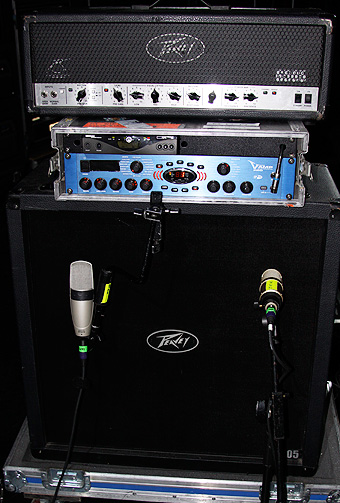
Dark Tranquillity Live Rig
MH: There is, but if you have a good sound engineer like Tue Madsen, who mixed the DVD, he can work magic with anything. I think we have a pretty nice live setup. It’s not the best amp in the world, but it’s convenient and it works out well for us.
NS: I think one of the prime reasons for having that setup, for us, is that we use MIDI signals from the drum computer to trigger the sound changes – so we don’t have to rely on floor pedals to change the sound.
CD: So it’s programmed into the V-Amp.
NS: Yeah, together with the metronome clicks.
MH: The laptop has MIDI-programmed changes, so it just changes the presets on-tempo on the preamp. So that’s easy – that’s why we can run around and be stupid onstage and not have to worry about pressing any pedals.
CD: If you can simplify it and it works that well, why not?
NS: Yeah, people are usually so surprised. It has happened that we’ve worked with sound guys, and they are certain that we have somehow modified the V-Amps, because: ‘you can’t sound that good with that kind of Pod clone.’ It’s like a cheaper version of an older machine [laughs]. It shouldn’t be sounding that good, but it really does in a live setting – especially on festivals, or shows where you don’t have a full day of setup. It’s reliable. We used to have these really high-end Rocktron preamps – you travel with them, they break down the whole time. We need something durable and reliable – go Behringer.
MH: They’re not perfect, though. By mistake, we recorded the solos on Character with the Behringer preamp. Because the producer or the mixing engineer wasn’t around the day we decided to start recording solos, so we just hooked it up. It sounded okay in the studio, but honestly, on the album production – I can actually tell it’s not the best thing. So I wouldn’t probably use it in a studio setting again, but for live it’s awesome.
CD [To Martin]: Speaking of Character, it seems like around the Character/Damage Done era, you started to implement more lead guitar riffs – like in ‘Lost To Apathy’ and ‘Focus Shift.’ When did you start getting into that? I know you switched over from bass, and I guess were initially playing rhythm guitar.
MH: I don’t think I really started playing more leads myself. Maybe as a part of the whole song maybe I wrote more lead stuff. If there’s a proper solo, Niklas will take care of it, but if there’s just some lead melody, I can do that. When I write a song, I don’t really think: ‘Oh, now I’ve got to throw in a lead for myself.’ That’s not how it works. It happens, and: ‘Are you going to play this or am I?’ That’s basically how we decide who plays what. There’s no real ego behind the leads [laughs].
NS: No, we’re both happy to [leave] the lead parts to someone else, I think.
CD [To Martin]: I was watching the documentary on the DVD, and they talked to Fredrik Nordström [Swedish record producer], and he commented that he thought that you had a pretty large creative role in the band and had strong opinions about the directions of things. What do you think about that?
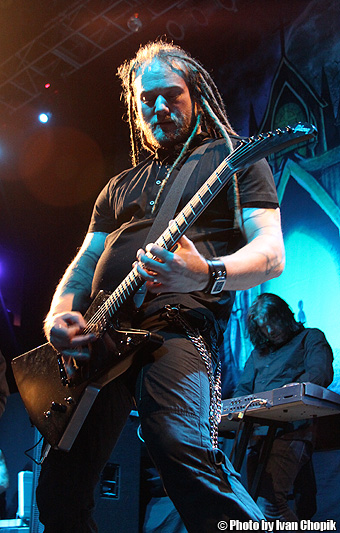
Martin Henriksson
MH: I think it’s true [laughs].
NS: [laughs]
MH: I kind of grew into that role after switching to guitar ten years back. Even before that, I wrote my share of the music, but I think I started writing more. I don’t write all of the songs, but I usually take charge, like: ‘Okay, guys – we can’t just be sitting on our asses. We need to do stuff!’ If I don’t write myself, I can’t tell the other guys: ‘Hey, come on – let’s do this.’ So yeah, I take charge mainly.
CD: I guess somebody has to sometimes.
MH: Yeah, absolutely. Otherwise we wouldn’t be sitting here today, for sure.
CD: Now Niklas, about ten years ago you founded Cabin Fever Media. You’ve been doing artwork for Dark Tranquillity and other bands, as well.
NS: Yeah, that’s been my day job for the past decade. I’ve always been drawing and painting, since an early age. Around the time of the Projector album being released, I was working as a web designer – which sounded like a fairly creative job, but was actually pretty boring. When Projector was out with my artwork and my layout, I started getting press from labels and bands, asking if I was available for commissioned artwork. I did some calculations, and I realized that I could actually make a living from freelancing, and also have the advantage of being able to combine the band with graphic designing – which gives a lot of more flexibility than if I would have to have had my normal job. So I’ve been doing that for quite some time.
CD: It’s a really big part of the whole aesthetic – the covers and everything. It really sets the tone.
NS: Yeah, I guess so. I didn’t actually do the cover for We Are The Void.
CD: But you did for the DVD, I think.
NS: Yeah. For the new album, the original deadline was set a few days after the recordings were supposed to end, and I just figured that I wouldn’t be able to put 100% effort into the artwork if we were still in the studio. So we just together said: ‘Well, maybe you should get someone else to do it.’ Partly because of me being busy with the music, and partly to avoid getting too predictable – and it could be interesting to bring someone else into the mix, and see what he can offer, visually speaking.
CD: Sure, take a step back from it for a bit.
NS: Yeah, I thought that I would obsess about it and freak out about not being in charge – but actually, it felt great. The normal procedure is that we finish an album, there’s a huge amount of work and stress, and basically directly after that I would have to start thinking about making really good artwork, which also is a stress situation. So for me, it was great, like: ‘Well, the album is done, now we can relax.’ and I wouldn’t have to take charge of visuals. So it was like a vacation for me.
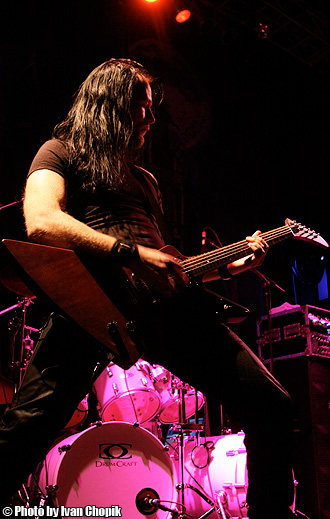
Niklas Sundin
CD: Your song structures are really excellent. They do a lot to set you apart from other metal bands. How do you go about arranging your songs?
MH: I don’t know exactly how we do it – I just know that we work really, really hard on the arrangements. I think anyone can just write a great riff and try and make a song out of it. For some reason, we have the talent or whatever, we are able to actually make good songs out of good material.
We work so hard, so I think in the end… I don’t know if it’s the structure, but it seems like we know how to write songs. I think that’s one thing that we get better at for every album. Like I said, anyone can write great riffs – you just have to make sure you have good enough riffs, and then you concentrate on making the best song out of it.
CD: The metal scene has changed a lot over the past 20 years since you guys started out. How do you think of the metal scene now as compared to back then?
NS: I guess [this] sounds pretty boring and elderly, but we don’t really think so much about it – I don’t think we have much of a clue about the current state of affairs. We do our thing, as we’ve always done, and throughout the years we have seen lots of different subgenres and different stylistic trends come and go, and I think our thing has always been not to be too focused on what everyone else is doing.
It’s not really by choice – it’s the way we are, I guess. I know there are some guys in the band that have an active interest in music, but I think neither me or Martin really listen that much to music, or have that much of an interest in keeping up-to-date with what bands are doing.
MH: We follow enough to make sure that we know what we’re doing, but we don’t really go outside the box and keep track of everything else.
NS: It’s also about the band being around for two decades – it kind of becomes an entity in itself. We have a certain framework which we work within, and there is a certain territory for everything we do, so we’re not really dependent on being cutting edge or being completely current all of the time – because that would create a situation where we would be relevant one day, and just completely outdated the other day. So we just do our thing without bothering too much about what the rest of the world is up to.
CD: What do you think has led to the changes in your style? You certainly sound quite a bit different than you did back in the early 90’s.
NS: I guess age or… [laughs]
MH: You evolve. You can try not to, but you’re going to evolve anyway – during 20 years, it’s going to happen. If we kept more up-to-date with the current scene, maybe we would have changed more or – I don’t know. I’m pretty comfortable with the way we’ve changed and evolved during the years. It’s right for us.
CD: I want each of you to tell me something that you’ve never mentioned before in an interview.
MH: Ah, I can tell you one thing – this is for guitar nerds, so you’ll probably be happy to hear this: we actually got a more or less unused Gibson Explorer from ’89 from a fan and friend here in the U.S. – back in 2003 he gave it to us. So he got it and played it for a couple of weeks when he was a kid back in ’89, and then he just kept it and didn’t touch it for 14 years. Then he just gave it to us. We don’t play it anymore, because we played it so much for five or six years, so it’s worn down. [To Niklas] I shouldn’t be telling this, if we’re trying to sell it, right?
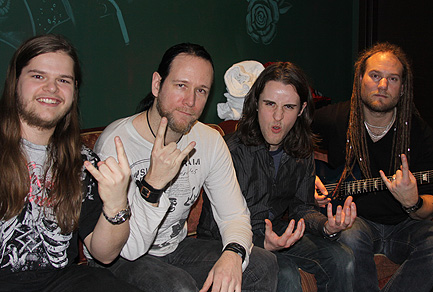
Chris Dingman & Ivan Chopik with Dark Tranquillity in 2010
NS [To Martin]: Ah, no. We’ll put it up anonymously on eBay, and pretend that it has been used by a bigger band than us.
MH [To Niklas]: And that it’s in mint condition.
CD: Just vintage wear.
NS: Yeah, yeah – exactly.
CD: You guys have been around for so long and have built your career effectively, you’ve changed and you’ve grown artistically – how would you advise younger bands who want to follow a similar path of artistic integrity?
NS: Just do it, I guess. It’s very hard to tell. We get that question all the time – new bands asking for career advice, and we don’t really know. People usually mean things like marketing, promotion, how to get shows, how to get recognition – all that. We don’t know. We come from a completely different scene and generation, where you had demo tapes and cassettes – where you were part of the huge tape trading network.
I think the recipe’s quite simple – if it’s all about the music, then play what you want, don’t compromise, follow your instincts. It’s kind of basic stuff. It’s not really rocket science. If people want to play music, they can do it, and if they want to keep their integrity, then just play what you feel for – without lending too much of an ear to what other people are saying, or what the current fashion is at the moment, music-wise. Just go for it, and do what you feel like.



